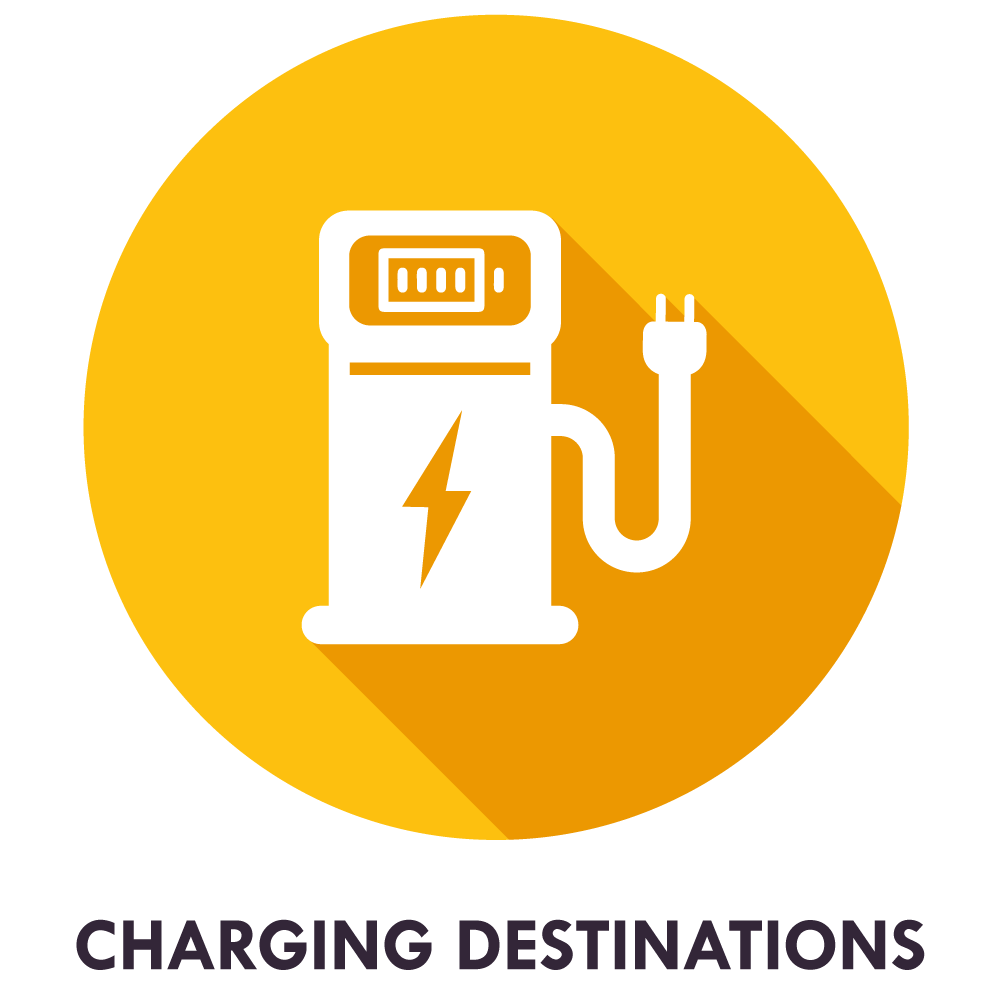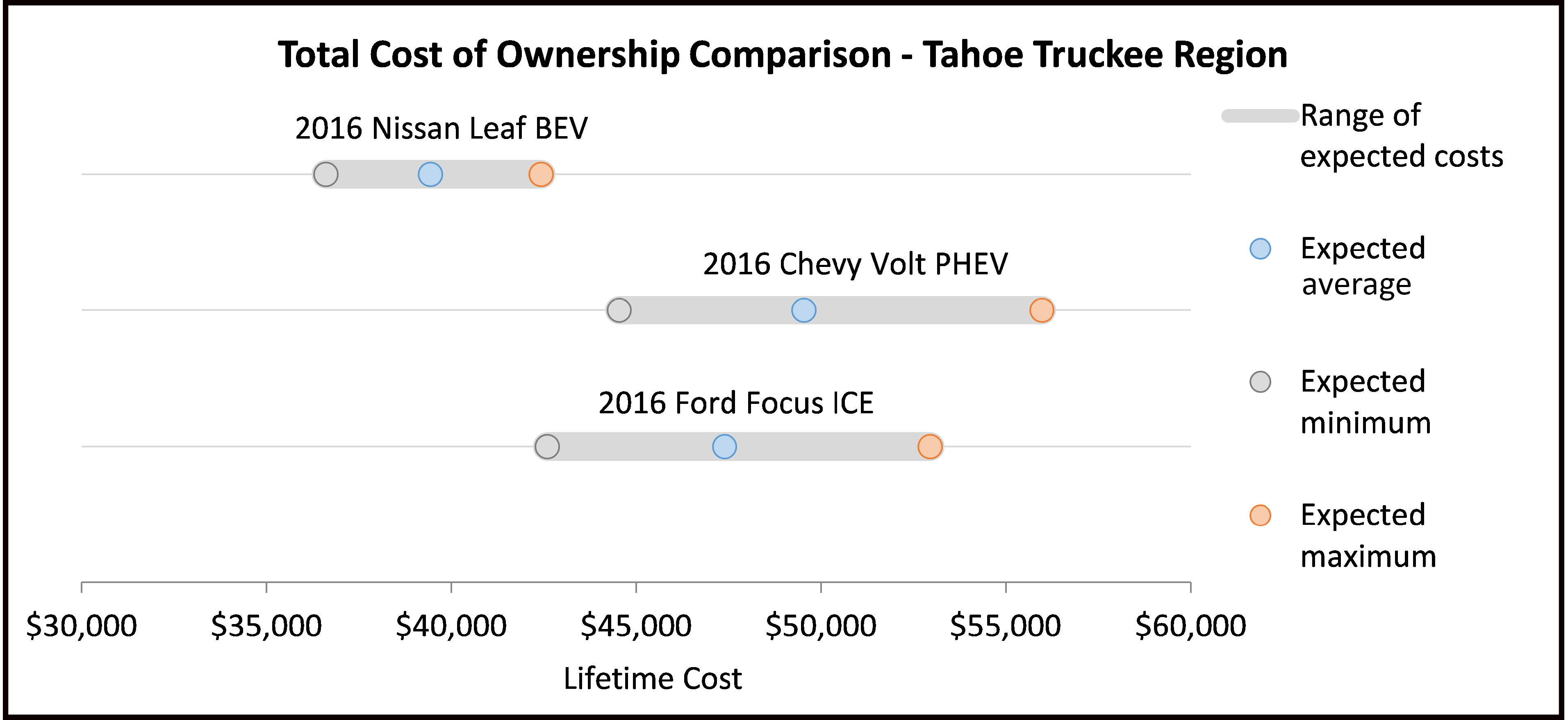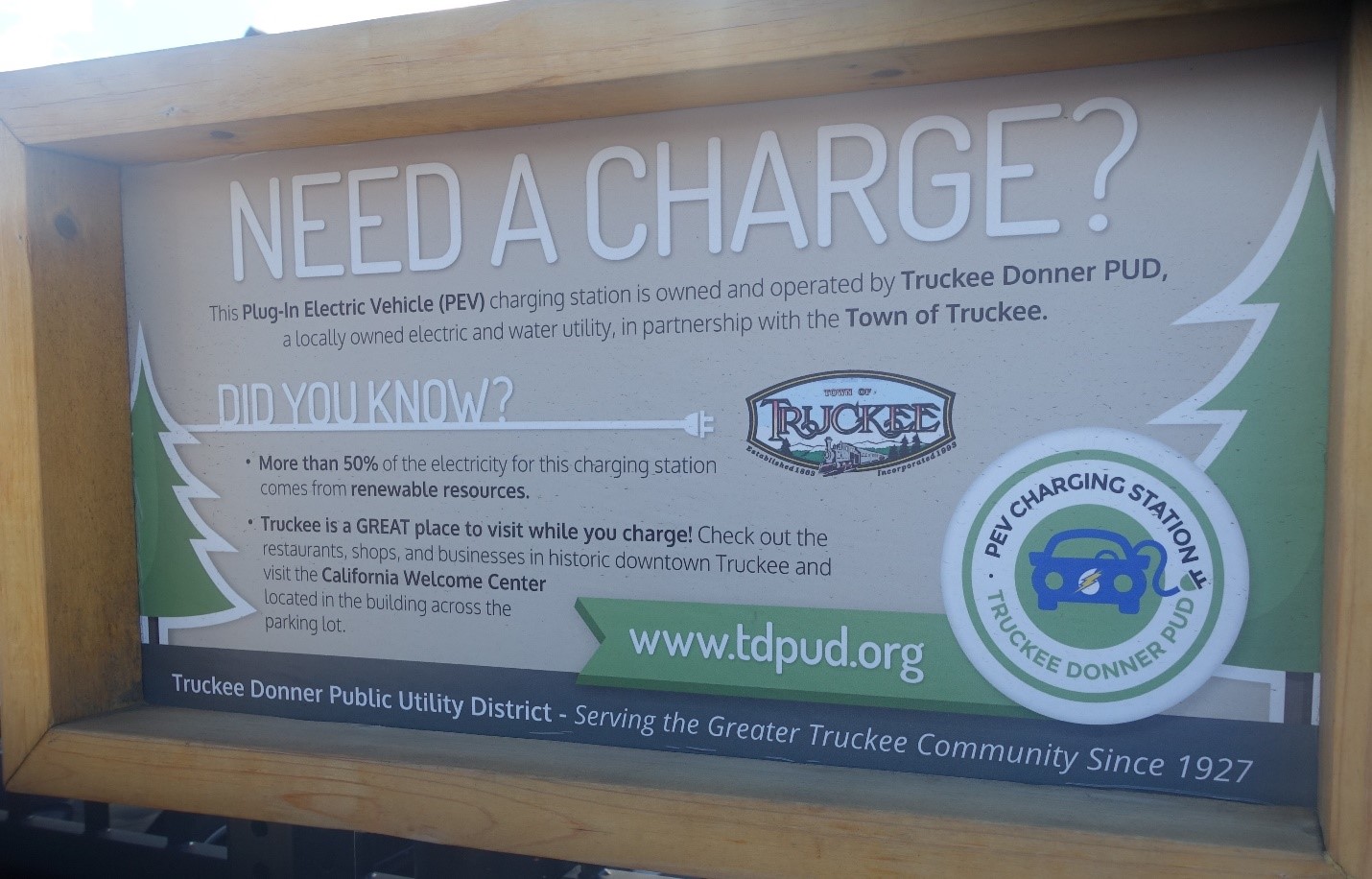
Choosing an electric vehicle that fits your lifestyle.
There are a variety of electric vehicles available today. Plug-in hybrid electric vehicles (PHEVs), like the Chevy Volt, have both an electric motor and a gasoline engine. Battery electric vehicles (BEVs), like the Nissan LEAF or Tesla Model S, run solely on electricity.
Use the Pick-a-Plugin quiz to find vehicles best fitting your travel needs and budget. The diversity of models available to consumers is expanding and changing rapidly. For instance, several manufacturers are introducing electric powered mini-vans, crossovers and SUVs.
Check out FuelEconomy.gov and the Alternative Fuels Data Center for the newest electric vehicle offerings.
Charging at home is easy.
You can use a standard three-prong wall plug or install a higher voltage electric vehicle charger in your garage for convenient, fast refueling. Either way, choosing an all-electric vehicle means no more trips to the gas station. Your vehicle will be charged up and ready to go for your morning commute.
- Before choosing this option, make sure the outlet is on a dedicated circuit with a capacity of 15-20 amps.
- A 240-volt electric vehicle charger (commonly referred to as a Level 2 charger) provides 10 to 25 miles of range per hour of charging. Level 2 chargers typically cost $600-$700. You will need an electrician to install the equipment and an electrical or building permit from your local permitting agency.
Need to charge when you’re out and about?
Here’s a map of electric vehicle charging stations in the Tahoe-Truckee region:
Understanding total cost of ownership.
The number one issue for most consumers purchasing a vehicle is price. Even with federal and state purchase incentives, electric vehicles may be priced higher than conventional vehicles or hybrid vehicles. However, electric vehicles help drivers save money by using a cheaper fuel, with a more predictable price. Consumer Reports, for instance, encourages drivers to understand the total costs of owning a vehicle over time before purchasing.
Filling up on electricity is cheaper than gasoline.
When gasoline is priced at $3 per gallon, it costs 55 to 83 percent less to drive a mile in a 2016 Nissan LEAF than a 2016 Honda Civic gasoline vehicle. The range of fuel savings depends on where you live within the Tahoe-Truckee region and whether you opt into a Time-of-Use (TOU) rate offered by your local utility. TOU rates provide a discounted rate on electricity consumed during off-peak hours (typically 11 p.m. to 6 a.m.), which makes it cheaper for you to charge your electric vehicle overnight. Contact your local utility to discuss which electric rate is best for your household needs. Want to see how much you could save on fuel costs if you drove electric? Check out the UC Davis EV Explorer and/or NREL Vehicle Cost Calculator.
What electric vehicle incentives are available, and how do I apply?
There are many federal, state, and local incentives being offered right now that can reduce the cost of buying an electric vehicle. Tax credits and rebates can be combined and are not necessarily baked-in to the purchase price of a vehicle at the dealership, so some additional paperwork is needed.
- Federal Plug-in Electric Vehicle Tax Credit: The federal tax credit is valued at up to $7,500 and is linked to the capacity of the battery in the vehicle. Battery electric vehicles, for instance, generally qualify for the full $7,500 incentive, whereas plug-in hybrids generally qualify for less.
- California Clean Vehicle Rebate Program: The state’s rebate program provides $1,500 and $2,500 toward the purchase or lease of a new PEV, depending on the vehicle type. High-income earners (single filers making more than $250,000 and joint filers making more than $500,000) are ineligible for the program. Furthermore, the rebate is increased by $1,500 for households with income less than 300 percent of the federal poverty level.
- El Dorado County Drive Clean! Incentive Program: El Dorado County Air Quality Management District is offering their residents a $1,000 incentive for the purchase or lease of a new electric vehicle. Preapproval is required, and applicants must agree to own or lease the vehicle for at least three years within El Dorado County.
- In California, the Air Resources Board (ARB) provides electric vehicles with access to carpool lanes. The current program lasts through Jan. 1, 2019, for an unlimited number of BEVs and the first 40,000 PHEV applicants.
- California electric vehicle drivers can save on insurance discounts. Farmers Insurance provides a discount of up to 10 percent on all major insurance coverage for PEV owners, while AAA offers up to a 5 percent discount.
- On the Nevada side, PEVs are exempted from Nevada’s emissions testing requirements, which can provide additional savings.
- Liberty Utilities and NV Energy both provide reduced electricity prices for charging during off-peak hours through TOU and EV specific rates. Compared to general service rates, these reduced rates can provide 19 to 47 percent savings for each kWh consumed during off-peak hours.
Want to keep up to date on the latest incentives?
Check out the ARB PEV incentive finder.
What’s the total cost of owning or leasing an electric vehicle compared to a conventional gasoline vehicle?
The figure below shows sample total cost of ownership calculations across three makes/models for comparison: the Ford Focus (conventional gasoline vehicle), Chevrolet Volt (PHEV), and a Nissan LEAF (BEV).
The total cost of ownership calculations include the following assumptions:
- MSRP of vehicles, does not make any assumptions about dealer discounts
- Federal and California incentives included
- Vehicle is owned for 10 years
- Annual miles driven: 10,000—14,000
- Gas prices: $2.50/gal—$4.00/gal
- Electricity prices: 5¢/kWh—13.2¢/kWh
- Percent of electric miles driven by Chevrolet Volt: 40—80%
- Annual insurance costs: Ford Focus—$1,294, Chevrolet Volt—$1,273, Nissan LEAF—$1,165
- Maintenance costs: Ford Focus—6.0¢/mile, Chevrolet Volt—4.9¢/mile, Nissan LEAF—4.5¢/mile
PERFORMANCE
Electric vehicles respond immediately, delivering instant torque and acceleration. Consumers have positive reports regarding electric vehicle handling and acceleration. You will not have to sacrifice performance for efficiency when you choose to drive electric.
Safety
Electric vehicles get safety ratings at least as good, if not better, than their gasoline counterparts. In most configurations, the battery packs are located beneath the vehicle, creating a lower center of gravity and safer handling.
Advanced technology
Telematics let you communicate with your electric vehicle remotely, whenever, wherever. You can schedule when your vehicle starts charging to take advantage of reduced energy rates and ask it to warm the cabin before you leave.
Maximizing range
Like gasoline-powered vehicles, there are many factors that can impact the fuel efficiency of electric vehicles. How far the vehicle can be driven using only the electric motor (i.e., all-electric range) can vary significantly based on driving conditions and driver habits. Of particular importance in the Tahoe-Truckee region is weather and terrain.
- Weather: Extreme cold temperatures currently can reduce electric range capability by 20-40 percent.[1] This reduction is because heating the cabin draws more auxiliary power from the battery so it has less energy to devote to propulsion. Many electric vehicles have thermal management systems to keep the battery at an optimal temperature; however, warming the battery uses power that reduces range. To maximize range in cold weather, consider heating the cabin before starting your trip and using only heated seats.
- Terrain: Driving up hills requires more energy and, therefore, draws more power from the battery than driving on flat terrain. Electric vehicles do have regenerative braking that recovers some of the energy used to climb hills.
- Driving habits: Speeding on highways, accelerating too fast, and abruptly braking can also affect the range of electric vehicles in the same way that it negatively impacts the fuel economy of conventional gasoline vehicles. To maximize range, maintain constant speeds and brake slowly so that you take advantage of the full energy-saving capability of the regenerative braking system.
When you drive electric, there are no tailpipe emissions.
Driving electric vehicles instead of conventional vehicles reduces pollution locally and regionally. Electric vehicles have zero tailpipe emissions when using electricity as a transportation fuel, helping to improve air quality. Other environment and community benefits are reduced noise and improved water quality because of a reduction in atmospheric nitrogen deposition and gasoline flowing into the watershed.
Did You Know?
More than half of the nitrogen going into Lake Tahoe comes from roads and commercial centers through atmospheric deposition where it feeds algae.(Tahoe TMDL, Lahontan and NDEP, 2010a; 2015 Threshold Evaluation – Water Quality for the Tahoe Region)
By driving electric, you are part of the solution to global climate change.
Transportation is the second largest source of greenhouse gas emissions in the region. As such, electric vehicles can help mitigate the impacts of global climate change because electricity has much lower greenhouse gas emissions than gasoline. Looking at greenhouse gas emissions on a lifecycle basis – that is, accounting for the emissions from all forms of carbon intense electricity generation supplied by NV Energy and Liberty Utilities and fuel-related activities – Battery electric vehicles (BEVs) in the study region emit about 70 percent less greenhouse gases on average in comparison to a conventional vehicle.

Greenhouse Gas Emissions % Reduction
When compared to standard gas-powered cars, electric vehicles provide a significant reduction in greenhouse gas (GHG) emissions.
Taking average electricity sources into account, electric cars can reduce 30-70% of personal transportation emissions.
- Reduction Difference Between Plug-in Hybrid Electric Vehicles & Gas Vehicles
- Reduction Difference Between All-Electric Vehicles & Gas Vehicles















